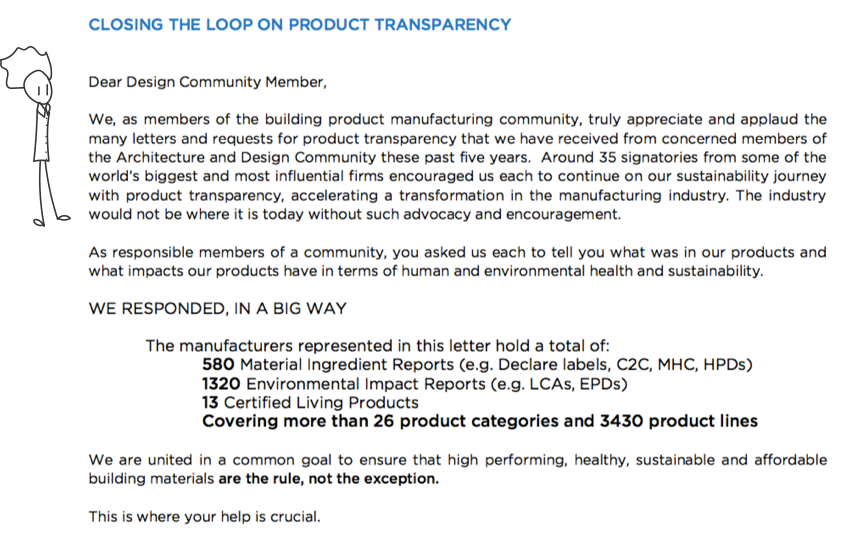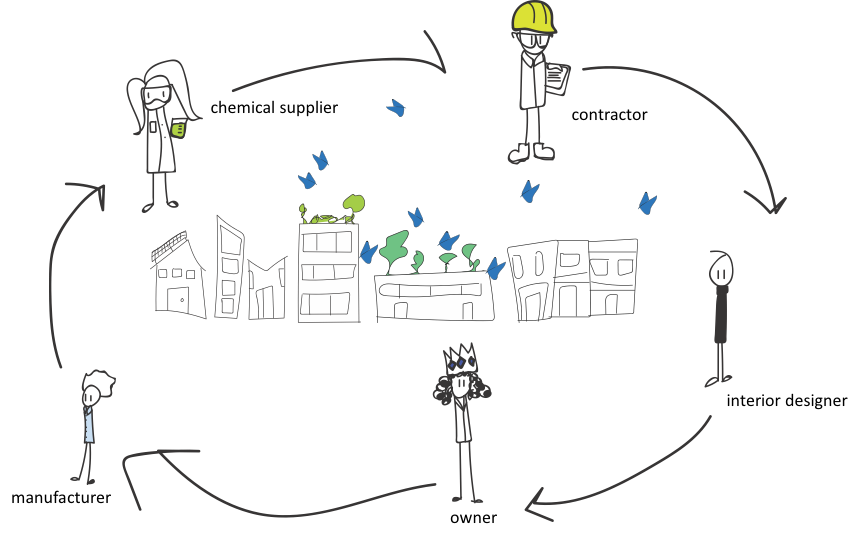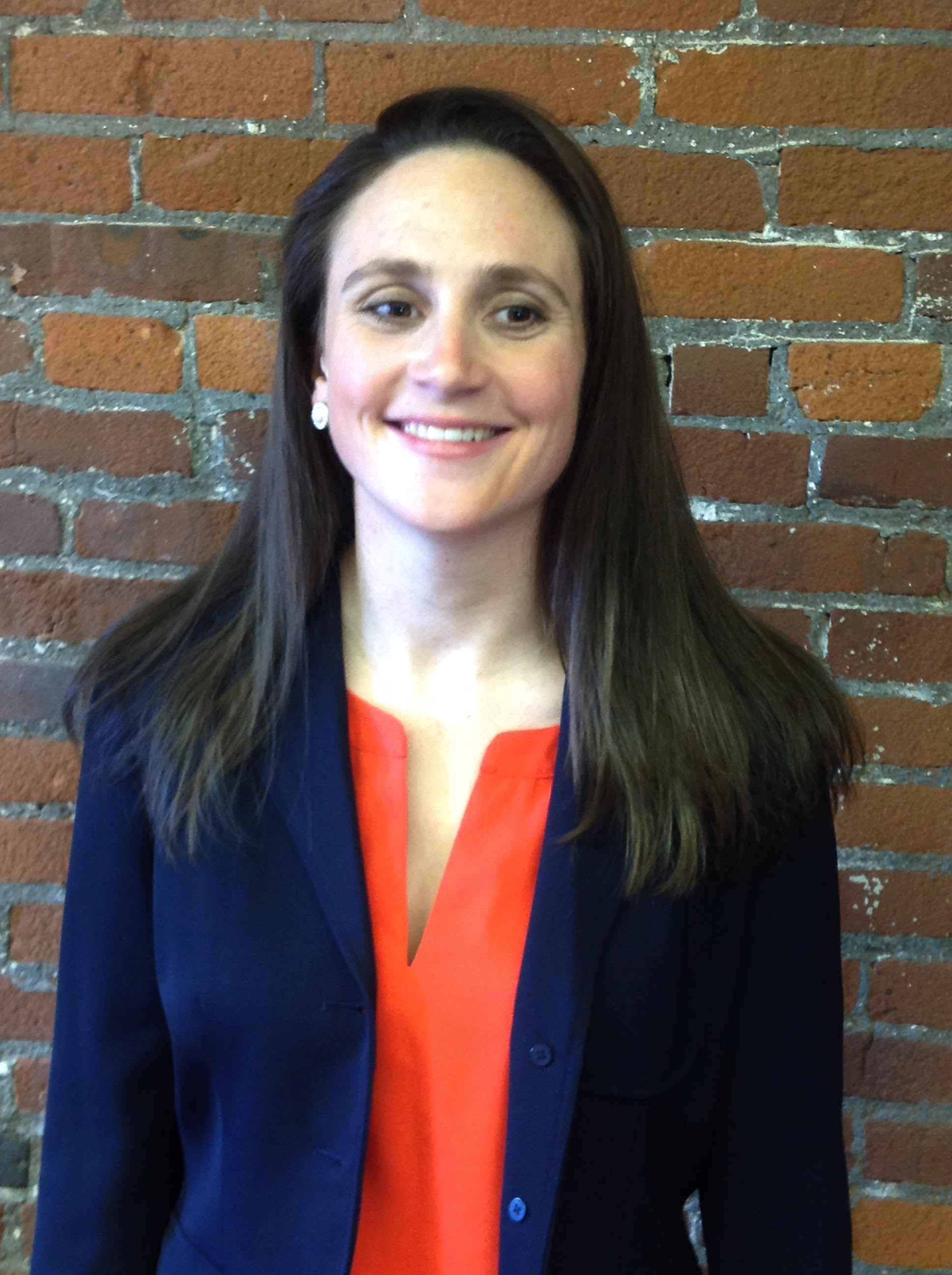SuperiorEssex’s vision and leadership

Any sustainability professional will tell you that truly impactful, industry-wide sustainable change is something that can’t be achieved by any single organization. It takes a concerted effort from every actor and across every sector in the value chain, from manufacturers and suppliers to architects, specifiers and building owners. Even more than that, it requires a sense of shared responsibility and accountability—an industry-wide understanding of sustainability goals, and a serious commitment to meeting them. Nowhere is this more relevant than in the building materials industry.
When Superior Essex started its own sustainability journey in 2010, building materials and products certified as sustainable were few and far between, and there was little or no transparency around the health and environmental impacts of manufacturing them, especially in the mechanical, electrical, and plumbing products arena. Superior Essex saw an opportunity to invest in transparency and optimization, and we pioneered several key sustainability breakthroughs in our industry. We were the first to carry out life-cycle analysis of cabling products, producing detailed and independently-verified Environmental Product Declarations. We adopted sustainable cable manufacturing practices in our facilities, becoming the first (and still only!) cabling manufacturer to receive zero waste-to-landfill certification (four years and counting). Today, we are the only cable manufacturer to produce verified Red List-free products, that can contribute to Living Building Challenge requirements, eliminating toxic chemistries that impact human health.
More recent years have seen many other manufacturers joining us in the transparency movement, leading to a greater proliferation of transparent, sustainable products for the building industry. In part, this shift was driven by a series of letters from the architect and design (A&D) community released in 2012. In these letters, architects and designers reached out to leading global product manufacturers, asking them to stand up for transparency and provide information about the health and environmental impacts of their products. To be frank, the sustainable materials industry would not be where it is today were it not for this effort.

While this move undoubtedly marked a positive step forward for our industry, major challenges remain. Although manufacturers have increased their investment in transparency and optimization in response to the A&D community’s demands, many of us are failing to see much of a return on our investment. For example, many A&D firms have shown no preference for sustainable products and materials over less sustainable alternatives. The modest financial return that has resulted makes the business case for manufacturers investing in sustainability much harder to make.

Clearly something had to change. If not, we ran the risk (and still do) of sacrificing all of the amazing progress that has already been made. So, this year, on behalf of Superior Essex, and in partnership with the International Living Future Institute (ILFI), I spearheaded a major industry-wide effort, with Alexandra Muller, Living Product Challenge Manager at ILFI, to break out of our silos and begin working together more effectively towards our shared sustainability goals.
Our next move came in the form of a response letter back to the A&D community. In April 2018, nearly 40 of the world’s leading building product manufacturers, all members of the Living Product 50 (LP50) group, co-signed a letter sent to 300 leading architects, designers and building owners. In our letter, we urged the A&D community to refresh conversations about sustainable materials that had gone a bit stale since their original letter campaign in 2012.

Through the letter (which you can read here), each signatory has made a number of commitments, covering a broad range of areas. These include continuing to build sustainability practices into manufacturing and material selection, as well as using common platforms for product information so all of our 1500+EPDs and 600+ material ingredient reports can be found in one place. Other commitments cover areas such as raising internal awareness of the importance of product transparency and sustainability, and prioritizing suppliers who support our sustainability efforts. The goal of these commitments is to define where we stand as a group, define what makes a “sustainable” buildings product manufacturer, and hold each other accountable for progress in our industry sector.
In return, the letter also asks the A&D community to take a number of actions. These include specifying products whose impacts have been transparently disclosed, and advocating to customers for programs such as LEED, WELL, and Living Building Challenge that value transparency. By making these requests, we hope that the letter will create a more consistent, collaborative approach to product transparency across our entire industry, ensuring that manufacturers’ investments in sustainability are complemented and rewarded by A&D firms’ purchasing decisions and that healthier, more sustainable products truly make their way into our buildings.
The letter marked an unprecedented move by the manufacturing industry. Never before has there been such a coordinated commitment to product transparency and sustainability across such a broad spectrum of global manufacturing leaders.
But our work doesn’t end there, and we’ve already taken a number of steps to ensure that what we achieved translates into tangible, long-term change. This collaborative change began when ILFI, LP50 and AIA joined forces at the Human Health + Materials summit at the Living Product Expo which saw upwards of 250 sustainability leaders representing the entire built environment space. We came together to discuss how to move our industry forward, together. This summit built on progress by collaborators at a forum hosted by AIA at Greenbuild 2017. Our communities broke out of silos, dictated how we could all work more collaboratively together to make collective and impactful change. View the meeting presentation here and notes here.
Alexandra Muller described the Human Health and Materials summit: “We created a space for conversation and

As proud as we all are of the progress achieved, we can’t become complacent. The truth is, this is just the beginning. We are just at the tip of the iceberg. In order to see lasting change, we need to continue building momentum for this movement by inviting our peers to join us. Above all, our success relies on continued collaboration. At Greenbuild in Chicago this year this conversation continued. In 2019 there will be numerous events held to increase and continue this movement. The next Human Health and Materials Summit will be held at Living Future 2019 in Seattle.
In the words of Simon Sinek, “Words can inspire, but it’s action that creates change.” My fellow members of the LP50 group take this message to heart. We are determined to change our industry for the better and committed to making that change together.

Join us.
To join the LP50 movement or learn more, contact Alex Muller at Alexandra.muller@living-future.org
To join the AIA Materials movement or learn more, contact Melissa Wackerle at MelissaWackerle@aia.org
A NOTE ABOUT THE LIVING PRODUCT 50
The Living Product 50 (LP50) is a collaboration among 50 leading manufacturers who are working to create the world’s first Living Products. The LP50 focuses on key leverage points to drive industry-wide change:
● Sharing innovative strategies and best practices
● Aggregating purchasing power to influence supply chains
● Active collaboration with the A+D community and other sector groups to accelerate adoption of green building practices
● Changing codes and standards to remove barriers
● Green chemistry innovation
Since its inception in 2015, the LP50 has expanded significantly in impact and has become the leading place for building product manufacturers to have a clear and unified voice to influence both the group’s collective customers and their supply chains. Members are passionate about finding solutions that grow the green building movement and accelerate a future with healthy, sustainable products for all.
It will take all of us to create the change we need. We are looking for new members to join this group. If you are actively building a sustainability program at your manufacturing company or thinking of starting, please contact Alex Muller at LPC.Support@living-future.org to learn more or to join the LP50 network!
● Support the green built environment through transparency, optimization of products, manufacturing operations and supply chains
● Collectively develop sustainability initiatives, track progress and report on progress of manufacturing community to various stakeholders
● Challenge both our customers and suppliers to better communicate and integrate sustainability initiatives
● Collectively define what it means to be a “sustainable” manufacturer



